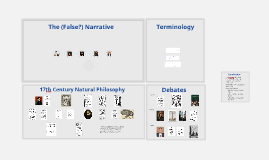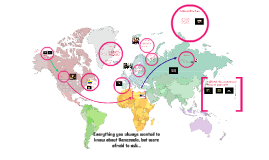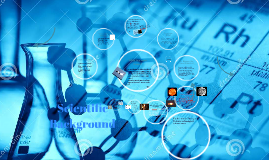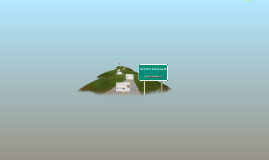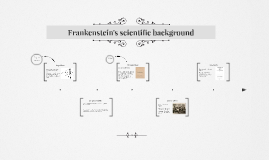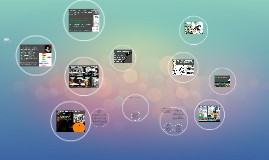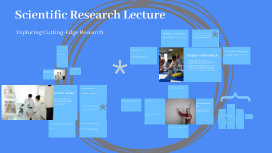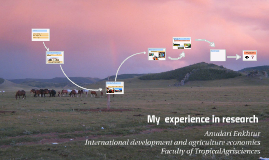Venezuela Background Lecture
Transcript: FAST FACT GOLDWYN 2013 "ExxonoMobil and ENI refused to cooperate and were forcibly taken over. Both comopanies have pending complaints before the International Centre for the Settlement of Invesment Disputes (ICSID) at the World Bankthat are expected to be decided in late 2013." Venezuela withdrew from ICSID Special Disad Thingys to consider Location: Northern South America, bordering the Caribbean Sea and the North Atlantic Ocean, between Colombia and Guyana Area: total: 912,050 sq km country comparison to the world: 33 land: 882,050 sq km water: 30,000 sq km total: 4,993 km border countries: Brazil 2,200 km, Colombia 2,050 km, Guyana 743 km tropical; hot, humid; more moderate in highlands Andes Mountains and Maracaibo Lowlands in northwest; central plains (llanos); Guiana Highlands in southeast http://www.thedailyshow.com/watch/tue-december-5-2006/democracy-on-the-crawl---venezuela-and-mexico Exports: $96.9 billion (2012 est.) country comparison to the world: 42 $92.6 billion (2011 est.) Exports - commodities: petroleum, bauxite and aluminum, minerals, chemicals, agricultural products, basic manufactures Exports - partners: US 40.2%, China 10.5%, India 5.5%, Cuba 4% (2011) Imports: $56.69 billion (2012 est.) country comparison to the world: 53 $46.44 billion (2011 est.) Imports - commodities: agricultural products, livestock, raw materials, machinery and equipment, transport equipment, construction materials, medical equipment, pharmaceuticals, chemicals, iron and steel products Imports - partners: US 28.6%, China 15.1%, Brazil 10.6% (2011) Crude oil - production: 2.47 million bbl/day (2011 est.) country comparison to the world: 14 Crude oil - exports: 1.645 million bbl/day (2010 est.) country comparison to the world: 10 Crude oil - imports: 0 bbl/day (2009 est.) country comparison to the world: 137 Crude oil - proved reserves: 209.4 billion bbl (1 January 2012 es) country comparison to the world: 3 Geography Additional Video Resources--Watch on your own!!! Everything you always wanted to know about Venezuela, but were afraid to ask... Land use: arable land: 2.85% permanent crops: 0.71% other: 96.44% (2011) Ummmm Did somebody order a Pizza? Flag description: three equal horizontal bands of yellow (top), blue, and red with the coat of arms on the hoist side of the yellow band and an arc of eight white five-pointed stars centered in the blue band; the flag retains the three equal horizontal bands and three main colors of the banner of Gran Colombia, the South American republic that broke up in 1830; yellow is interpreted as standing for the riches of the land, blue for the courage of its people, and red for the blood shed in attaining independence; the seven stars on the original flag represented the seven provinces in Venezuela that united in the war of independence; in 2006, President Hugo CHAVEZ ordered an eighth star added to the star arc - a decision that sparked much controversy - to conform with the flag proclaimed by Simon Bolivar in 1827 and to represent the province of Guayana Environment - current issues: sewage pollution of Lago de Valencia; oil and urban pollution of Lago de Maracaibo; deforestation; soil degradation; urban and industrial pollution, especially along the Caribbean coast; threat to the rainforest ecosystem from irresponsible mining operations Remove Sanctions In 1499, an expedition led by Alonso de Ojeda visited the Venezuelan coast. The stilt houses in the area of Lake Maracaibo reminded the navigator Amerigo Vespucci of the city of Venice, so he named the region "Veneziola". Unicameral Legislature 165 Members, 5 year term United Socialist Party (PSUV--Chavez' Camp) v. minority Coalition for Democratic Unity (MUD) Trafficking in persons: current situation: Venezuela is a source, transit, and destination country for men, women, and children trafficked for the purposes of commercial sexual exploitation and forced labor; Venezuelan women and girls are trafficked within the country for sexual exploitation, lured from the nation's interior to urban and tourist areas; to a lesser extent, Brazilian women and Colombian women are subjected to forced prostitution; some Venezuelan women are transported to Caribbean islands, particularly Aruba, Curacao, and Trinidad & Tobago, where they are subjected to forced prostitution tier rating: Tier 3 - the government investigated potential cases of suspected human trafficking and arrested at least 12 people for trafficking crimes during the reporting period; however, there was no further publicly available information regarding those cases; Venezuela is not making significant efforts to comply with the minimum standards for the elimination of trafficking (2008) Illicit drugs: small-scale illicit producer of opium and coca for the processing of opiates and coca derivatives; however, large quantities of cocaine, heroin, and marijuana transit the country from Colombia bound for US and Europe; significant narcotics-related money-laundering activity,






